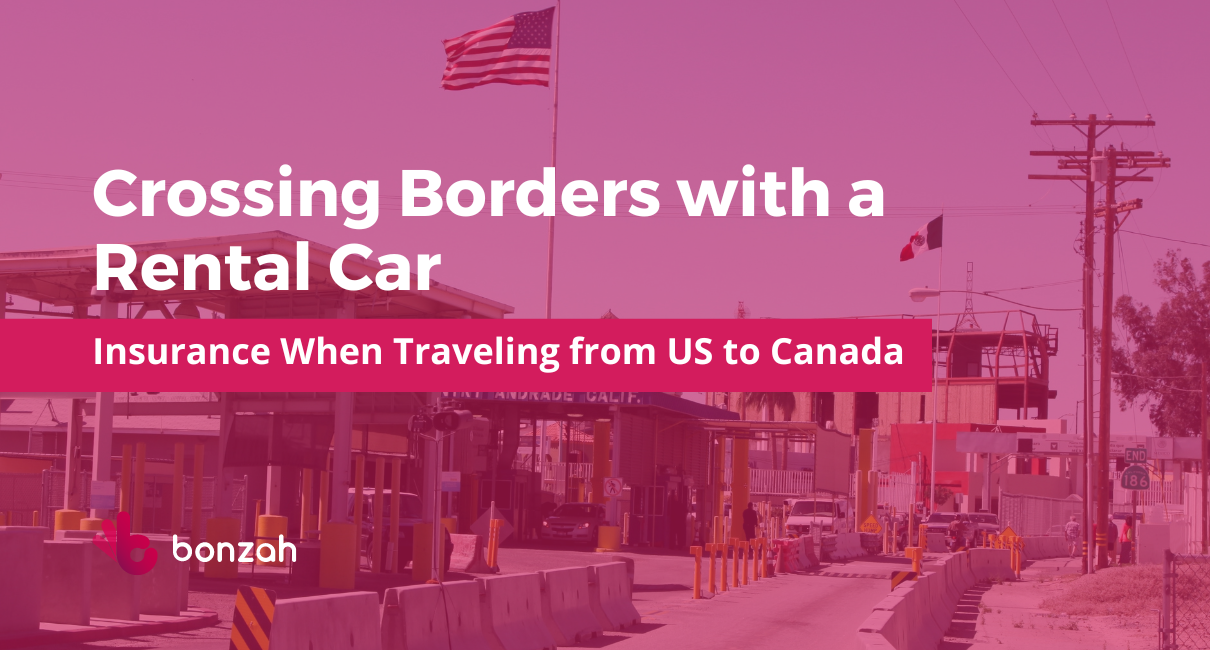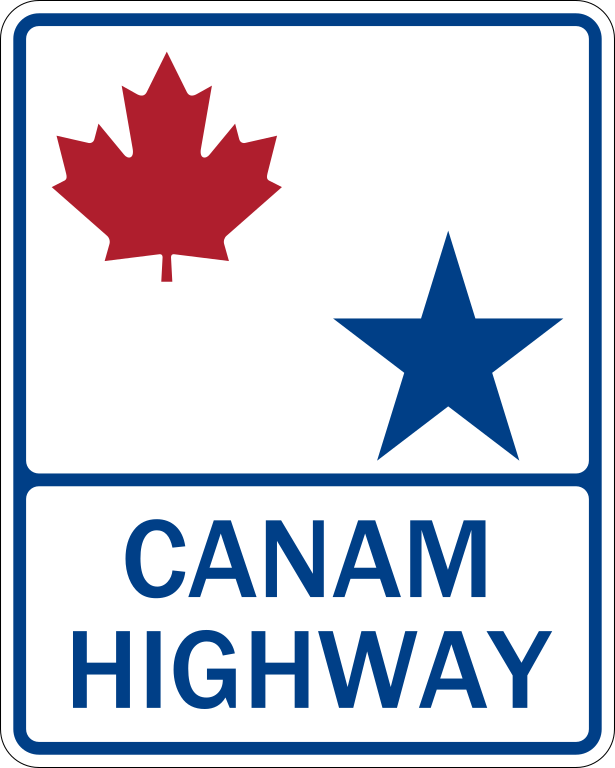 Are you planning a road trip from the U.S. to Canada? If so, there are many things to consider when it comes to insurance when going across the border with a rental car. Crossing borders can be unpredictable and even dangerous at times so your primary concern should be obtaining adequate coverage. Without the proper coverage, you could be liable for costly damages or accidents. Here's what you need to know before you hit the road.
Are you planning a road trip from the U.S. to Canada? If so, there are many things to consider when it comes to insurance when going across the border with a rental car. Crossing borders can be unpredictable and even dangerous at times so your primary concern should be obtaining adequate coverage. Without the proper coverage, you could be liable for costly damages or accidents. Here's what you need to know before you hit the road.

CanAm Highway; Attribution: Public domain (Wiki)
Taking Your Rental Vehicle from the US to Canada
If you don't own a car, US visitors to Canada think they have no choice but to bus or fly in. Several rental agencies - Budget, Dollar and Hertz, for example - do allow cross border travel for renters wishing to drive in Canada. It starts with full disclosure of your travel plans at the booking stage with your preferred rental agency. (You can also read why renting a car is a good choice for longer trips)
Revealing your travel itinerary and asking them if it is in order to cross the border into Canada with your rental vehicle is vital. Any cover-ups could end in costly penalties and even rejection of any insurance claim in the event of an incident during the hire period.
Many travelers entering Canada may prefer to secure their rental car in that country. They argue that it is way less onerous than attempting to cross from the US into Canada. On the good news front, cover is available for either option if you secure your Damage Protection Insurance in advance. Visit Bonzah.com online and secure your peace of mind.
Remember the Relevant Paperwork
Before agreeing to your rental car contract, the rental agency will likely ask you to present the necessary documentation. It helps if you hold a valid U.S. driver's license, which entitles you to drive in Canada. When crossing the border, have your valid passport handy.
Travelers living in states bordering Canada can secure a Western Hemisphere Travel Initiative enhanced driver's license that works for crossing the border. Native Americans may also use a tribal ID card.
In the US, rental car agencies will focus on insurance coverage when you rent their vehicle with the intention of crossing into Canada. Regardless of whether you use the agency's insurance or you rely on your own insurance, the agency will likely issue you a Canadian Non-Resident Insurance Card. This basic document shows Canadian authorities that you are insured.
Understand the Differences in Insurance Requirements
The primary concern for travelers looking to cross borderlines in their rented car should be obtaining adequate coverage. For one, most standard rental car insurance policies do not cover international travel or cross-border trips. In addition, some countries require specific types of insurance coverage that may not be included in your rental agreement.
To ensure you have adequate coverage, it's important to know the differences in rental car insurance requirements.
Liability Coverage
Liability insurance covers you in case you cause damage to other people's property or injure someone in an accident. While both the United States and Canada require liability insurance, there are some differences between the two countries when it comes to this type of coverage.
One key difference is in the minimum coverage required. In Canada, each province sets its own minimum coverage requirements for drivers. These requirements are typically higher than those set by US states. For example, in Ontario, drivers are required to have a minimum of $200,000 in third-party liability coverage. This means that if you cause an accident and someone is injured or their property is damaged, your insurance will cover up to $200,000 of their expenses.
In contrast, the minimum liability coverage requirements vary widely across US states. Some states require as little as $10,000 in bodily injury liability per person and $20,000 per accident for multiple people involved. Other states require much higher limits – up to $50,000 per person and $100,000 per accident.
Proof of Insurance
When it comes to renting a car in the United States and Canada, there are some differences in the proof of rental car insurance requirements that you need to know. One of the primary differences between these two countries is that rental car companies in the US usually sell insurance as part of their rental packages.
In contrast, Canadian companies are not required to provide this. Rather, renters can either purchase additional coverage or provide their own through personal auto insurance. You will need to show proof of your own insurance coverage, either through your personal auto insurance policy or a separate travel insurance policy that covers rental cars.
Additional Insurance Coverage
As mentioned previously, the minimum liability coverage limits are usually higher in Canada than what is typically required in the US. So depending on your needs, you can consider additional coverage such as Supplemental Liability Insurance (SLI) and personal accident/personal effects coverage. These are optional coverages that can provide extra protection during your rental period.
Check Your Personal Auto Insurance Policy
If you own a car, you should check your personal auto insurance policy to see if it covers you while driving in another country. US auto insurance is valid in Canada as long as the person driving is a tourist and not a resident of Canada.
If you plan using your own insurance, check with your insurer and confirm your coverage extends to Canada. If not, you may have to pay for supplemental coverage through the rental agency or third-party insurance providers.It's important to understand the terms and conditions of any insurance policy you purchase to ensure you have the coverage you need.
Consider Purchasing Additional Coverage
If your personal auto insurance policy does not provide coverage for rental cars in Canada, it's important to consider purchasing additional coverage. This can be done through the rental car company or a third-party provider like Bonzah.
Be sure to read the terms and conditions of the policy carefully to understand what is covered and what is not. Some policies may have exclusions or limitations, such as only covering certain types of damage or requiring you to pay a deductible. It's also important to compare prices and coverage options from different providers to ensure you are getting the best deal.
Be Prepared for Emergencies
Traveling with a rental car across the border to Canada can be a great and safe experience if you take the right steps. Prepare for contingencies during your road trip by ensuring you have a fully charged phone, a first aid kit, and a flashlight with extra batteries in your car. It's also a good idea to have a map or GPS device with you in case you get lost. Also, make sure you have the contact information for the rental car company and your insurance provider in case you need to report an accident or file a claim.
Being aware of what rental car insurance you’ll need and obtaining appropriate and adequate coverage before beginning your trip is essential. Consider opting for additional coverage; while more costly initially, this could spare you hefty out-of-pocket costs should an incident occur. To get peace of mind on the road, check out Bonzah’s rental car insurance options!